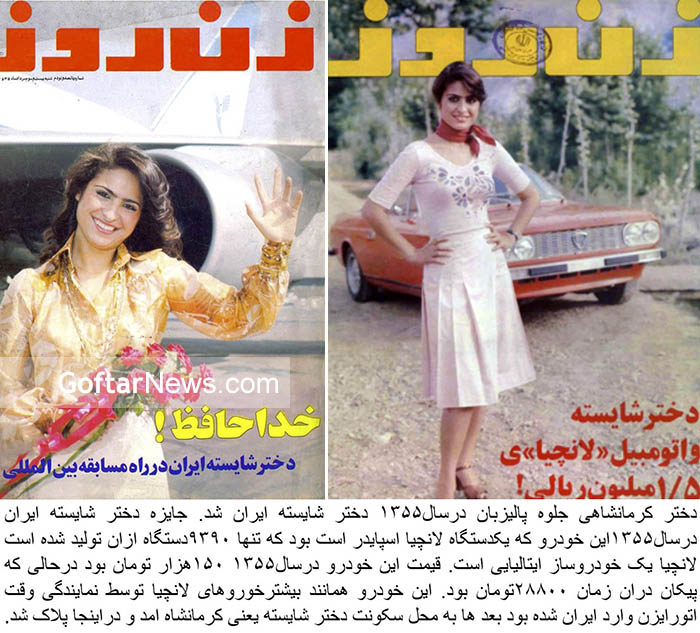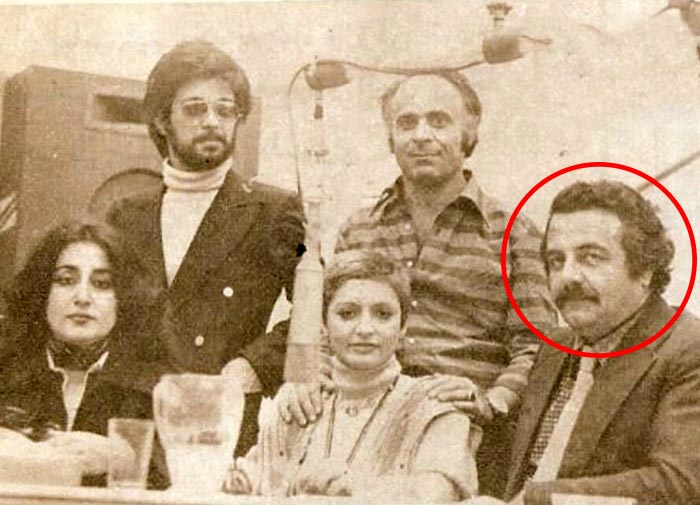The Legacy of Miss Persia: Beauty Pageants and Iconic Winners Before the 1979 Revolution
5. Jelveh Palizban (1976): Winner of the Coveted Lancia Spider
Jelveh Palizban, from Kermanshah, won the Most Worthy Girl of Iran title in 1976, a year marked by lavish prizes and cultural prominence for the titleholders. One of her most celebrated prizes was a Lancia Spider, a rare Italian car that symbolized the luxurious rewards granted to pageant winners. The car, valued at 150,000 tomans, became an icon of success and was as celebrated as the title itself.
The Lancia Spider’s story is intertwined with Jelveh’s, symbolizing a time when Iranian pageants were celebrated with prestige and glamour. Though Jelveh emigrated from Iran soon after, her title and the Lancia Spider became part of her legacy, reminding many of the cultural pride associated with the pageants.
The car was eventually purchased and preserved by an Iranian collector, maintaining its connection to Iran’s beauty pageant history and symbolizing the unique prizes and prestige these titles brought to young Iranian women. Jelveh’s win and the Lancia’s history provide a glimpse into the material and cultural significance that these pageants held in Iranian society.
Glamour and Prestige: The Event’s Cultural Impact
The Most Worthy Girl of Iran pageant was more than just a beauty contest. It was a symbol of national pride, showcasing Iranian culture and style. The ceremony often took place in luxurious venues such as the Tehran Hilton Hotel, and prominent figures from Iranian society, including artists and journalists, participated in the judging. For instance, Homa Ehsan, a respected journalist from Zan Rooz magazine, presided over the question-and-answer sessions, adding an intellectual dimension to the event.
Beyond the national stage, the winners often participated in international pageants, earning titles and placing Iran among countries with notable beauty and cultural representation. This period of pageantry gave Iranian women a unique platform to display their sophistication, intelligence, and modern values on a global scale.
The End of an Era: 1979 Revolution and Beyond
The 1979 Islamic Revolution marked the end of public beauty pageants in Iran. With the shift in the sociopolitical landscape, events that showcased women’s beauty and appearance were no longer deemed culturally appropriate under the new government. The pageants ceased, and Iran’s participation in international beauty contests came to a halt. For decades, these competitions have remained a nostalgic reminder of a unique cultural era in Iranian history.
Legacy and Modern-Day Interest
Today, the legacy of pre-revolutionary beauty pageants in Iran has sparked curiosity and interest, both domestically and internationally. Many Iranians and international historians look back at these events as representations of a time when Iran was more integrated into global pop culture. The lasting appeal of figures like Shahla Vahabzadeh and Shohreh Nikpour is a testament to the cultural influence of these pageants, and the memories remain a part of Iran’s complex and vibrant history.





